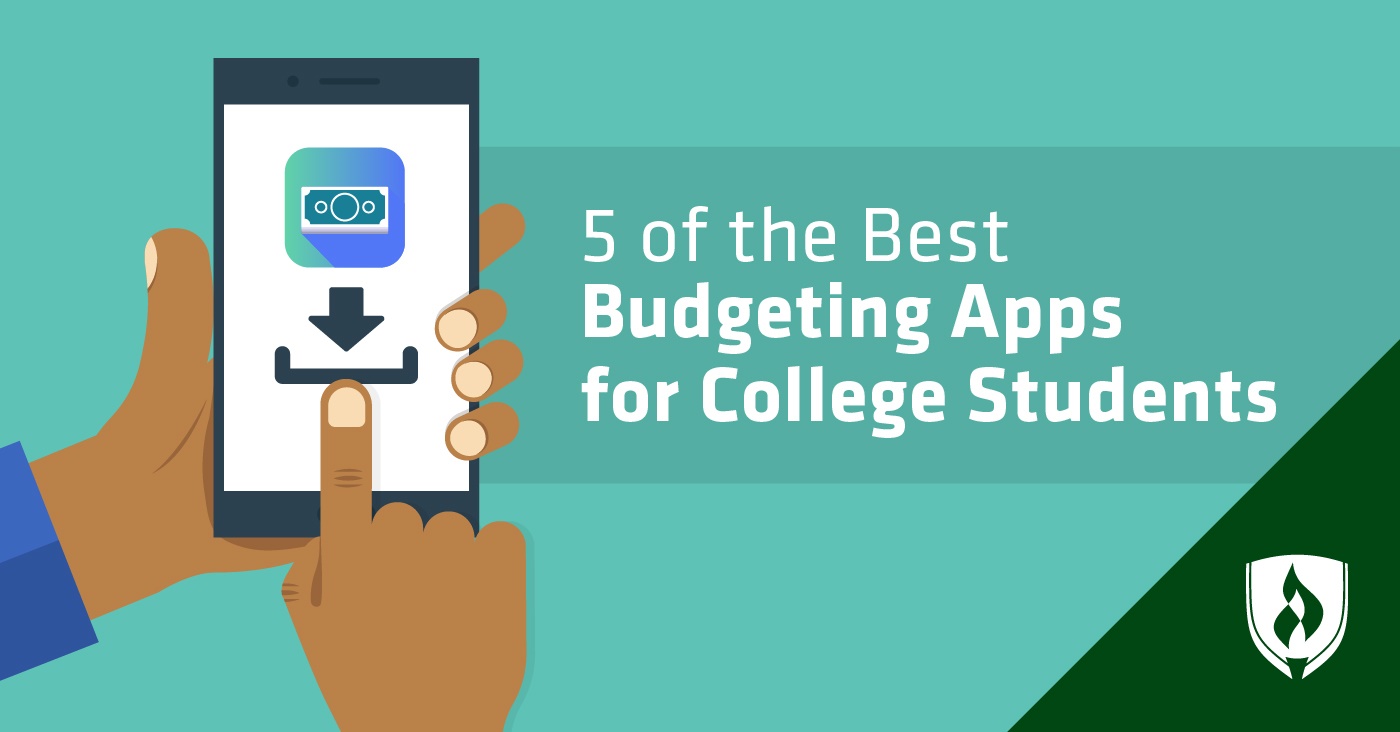
Managing money while attending college can be a struggle. You may have limited income due to devoting your time to classroom responsibilities, or maybe you're living off of student loans and want to keep your expenses on track and to a minimum.
A good college student budgeting app can help you manage your finances and find areas to cut back. Granted, there are a lot of budget apps out there so this article will only cover five of the best budgeting apps for college students. If you’re looking for ways to keep your money in order, check out these five apps that stand out from the crowd.
5 Budgeting apps to help you keep your college student cashflow in order
Budgeting is no easy feat. But harnessing the power of technology can help you keep your finances organized and under control. Consider the following tools:
1. Mint
Why it stands out: Mint is one of the best-rated overall budgeting apps available. Made by the company that developed QuickBooks® and TurboTax®, it’s clear that the creators of this app know a thing or two about budgeting. Mint securely connects to your bank account and automatically inputs purchases so you can spend less time entering every transaction.
Reminders for upcoming bills and notifications for low funds help you stay on track and avoid overspending. It also performs a few handy tricks like separating the $2.50 from a $102.50 ATM withdrawal into a “fees” category, serving a nice reminder to try to keep those fees down.
Why it’s good for college students: Mint offers a great selection of tips for new budgeters. Unlimited access to your free credit score is paired with advice on how to improve it. This app will also provide suggestions when you’re creating a budget, so you can craft one that's easy to stick to and use.
2. PocketGuard
Why it stands out: If you’re worried about overspending, this is the app for you. In an easy-to-navigate dashboard, PocketGuard will show you exactly how much “spendable” money you have after bills, goals, and necessities are accounted for. For visual learners, a simple pie chart shows you how much each category accounts for.
Why it’s good for college students: This app offers users the option to link bank accounts, credit cards and more, so you can easily see how your student loans fit in with the rest of your income and spending. Another great perk is automatic alerts for opportunities to save on your bills. If you can reduce your phone bill with a promotion, for example, PocketGuard will let you know.
3. Wally
Why it stands out: Wally offers a visual overview of your spending so you can easily see what your basic necessities are. This a great feature for those who might feel overwhelmed by big lists of transactions—or budgeting, in general. Wally also offers a calendar view of your bills so you can see month-by-month when things are due.
Why it’s good for college students: For students with families, Wally offers a “joint banking” option that allows you to see and manage a group budget. By syncing to your bank accounts, Wally can also provide insights on your collective cash flow and spending habits. This is a great way to learn about your personal money management styles and how to improve upon them.
4. EveryDollar
Why it stands out: EveryDollar’s budgeting app operates on the idea that you should account for every single dollar you earn. By inputting your paychecks every month, you can then allocate your income to all the important categories—including savings and an emergency fund. This method helps account for months when your paychecks vary—which can be especially helpful.
You can easily enter transactions from anywhere and sync to all your devices. Connecting this app to your bank account will require a paid upgrade, while entering receipts manually might help you keep in better touch with your spending. The choice is up to you!
Why it’s good for college students: EveryDollar offers helpful blog posts and regular emails about improving your money management techniques. Their resources range from ways to make extra money to filing taxes to paying off your student loans. They maintain a non-judgmental approach that freely admits budgeting can be hard, acknowledging that life happens but there are ways to prepare and get back on track.
5. Simple
Why it stands out: Simple is more than just a budgeting app. With an affiliated debit card, you can set up direct deposit into your Simple account. This app is centered around the idea of managing your "safe-to-spend" money. By automatically accounting for your bills and financial goals each month, this app will tell you exactly how much money you can spend in real time. While there is currently no way to build credit with this system, Simple is still a good option for banking and budgeting all in one place. No overdraft or interest fees make this a safe option for new budgeters.
Why it’s good for college students: Simple makes it easy to save. By creating timeline–based goals, the app can automatically set money aside to meet your targets exactly when you need them. Another key feature allows you to round up every transaction to the nearest dollar and deposit the difference into a savings account.
Go forth and spend wisely
The best budgeting apps for college students are those that make you feel confident about your money. Even with a small budget, you can figure out how to divvy it up so you don't have to feel guilty about spending or be blindsided by emergency expenses. Now that you have some options, you can find the right college student budget app for you. To discover more resources for managing your money, visit the Rasmussen College Tuition and Aid page where you can estimate your tuition costs and learn more about paying for college.
QuickBooks and TurboTax are registered trademarks of Intuit, Inc.




